#49: When to Use Dialogue Tags (and How)
Jane Austen is a master of dialogue, and the next series of lessons will focus on what we can learn from Jane Austen on writing dialogue in fiction. This post will specifically address when to use dialogue tags—and how.
While dialogue tags are often taught as an introductory writing technique, Austen uses them in advanced ways, to control rhythm and cadence, and to convey emotion and conflict. Many times, she chooses to forgo dialogue tags entirely. We’ll start with a basic definition of dialogue tags, analyze her sophisticated use of tags in a passage from Pride and Prejudice, and consider the question of when to use dialogue tags, and when to omit them entirely.
A dialogue tag is a phrase that identifies the speaker of a passage of dialogue.
In English, the most commonly used dialogue tag is the word “said” accompanied by the name of a character or a pronoun.
Often dialogue tags are used for clarity and to prevent confusion. Dialogue tags can also be used to add a pause, or to describe how or why a character is speaking.
Instead of using a dialogue tag, an action beat can be used—if a character is acting or doing something, then we assume that the dialogue within the passage also belongs to them.
The Meryton assembly is the first time that we meet the single and ever-so-desirable characters, Mr. Bingley and Mr. Darcy.
Consider the use of dialogue tags and action beats in this passage in which Mr. Bingley attempts to convince Mr. Darcy to dance:
“Come, Darcy,” said he, “I must have you dance. I hate to see you standing about by yourself in this stupid manner. You had much better dance.”
“I certainly shall not. You know how I detest it, unless I am particularly acquainted with my partner. At such an assembly as this, it would be insupportable. Your sisters are engaged, and there is not another woman in the room whom it would not be a punishment to me to stand up with.”
“I would not be so fastidious as you are,” cried Bingley, “for a kingdom! Upon my honour, I never met with so many pleasant girls in my life as I have this evening; and there are several of them you see uncommonly pretty.”
“You are dancing with the only handsome girl in the room,” said Mr. Darcy, looking at the eldest Miss Bennet.
“Oh! she is the most beautiful creature I ever beheld! But there is one of her sisters sitting down just behind you, who is very pretty, and I dare say very agreeable. Do let me ask my partner to introduce you.”
“Which do you mean?” and turning round, he looked for a moment at Elizabeth, till catching her eye, he withdrew his own and coldly said, “She is tolerable; but not handsome enough to tempt me; and I am in no humour at present to give consequence to young ladies who are slighted by other men. You had better return to your partner and enjoy her smiles, for you are wasting your time with me.”
In this passage, there are three dialogue tags which use said: said he, said Mr. Darcy, and coldly said. There is one dialogue tag which uses a different verb: cried Bingley. This shows both Mr. Bingley’s emotion and the manner in which he is speaking. There is one spot where an action beat is used instead of a dialogue tag: “Which do you mean?” and turning round, he looked for a moment at Elizabeth… (This phrasing works well in Pride and Prejudice, but as a note, modern dialogue conventions often—but not always—split the action beat into a separate sentence. If this convention was used, this paragraph could be written something like: “Which do you mean?” He turned round and looked for a moment at Elizabeth.)
Using Said vs. Other Dialogue Tags
The author Elliott Slaughter performed a study of dialogue tags, and one of the texts that he analyzed was Pride and Prejudice. He found that 50% of Austen’s dialogue tags used the word “said.”
In English, “said” is seen as an invisible dialogue tag. It does its job, assigning dialogue to the speaker, but we aren’t meant to really notice or pay attention to it. Often, we don’t want the reader to be focusing on the dialogue tag—we want them to focus on the dialogue itself, and strong dialogue often gives a feel of how the speaker is speaking on its own, without extra description. In the brilliant book Craft in the Real World, Matthew Salesses explains that said being seen as invisible is just a cultural convention, and is not inherently better or right. Non-native English speakers sometimes find the constant use of the word said to be jarring, while those who have read hundreds of books in English become used to it.
Endless authors and books on writing recommend that writers primarily use the word said in dialogue tags, and to use other verbs minimally or not at all. Largely, I agree—a lot of the time, you do want the dialogue tag to be invisible, and if you’re constantly using other verbs, it can distract or become annoying. Yet when we read Pride and Prejudice we can see how effectively Austen uses other dialogue tags.
According to Elliott Slaughter, while 50% of Austen’s dialogue tags use the word said, 32% of the time she uses “functional dialogue tags”—tags which “indicate the function or role of a piece of dialogue.” The functional dialogue tags Austen uses include replied, added, continued, thought, repeated, and answered. Another common functional dialogue tag in fiction is asked. 18% of the time Austen uses “descriptive dialogue tags”—“verbs that describe the manner, mood or inflection of the speech and not simply its function or form.” The descriptive dialogue tags used by Austen include cried, observed, exclaimed, called, and whispered.
In a previous Jane Austen Writing Lesson, I talked in more depth about how characters say lines of dialogue; one method of doing so is to incorporate actions or adverbs. The only thing I’ll add here is an extra detail from Slaughter’s study—at 14 points in Pride and Prejudice, Austen uses an adverb to describe how someone says something. The adverbs she uses include impatiently, warmly, drily, stoutly, and resentfully.
In the passage between Mr. Darcy and Mr. Bingley, there were two paragraphs of dialogue that did not include any dialogue tags or action beats. The paragraph that begins “I certainly shall not” is Mr. Darcy’s dialogue, while the paragraph that begins “Oh! she is the most beautiful creature I ever beheld!” is Mr. Bingley’s.
Omitting a dialogue tag focuses the reader on what the characters are saying, and it increases the pace by which we read the dialogue. In Austen’s novels, dialogue tags are used only if they are necessary for comprehension, if they will positively impact the rhythm or cadence, or if they truly add something to the reader’s understanding of the characters and their conversation. The rest of the time, she does not include dialogue tags.
In Elliott Slaughter’s study on dialogue tags in Pride and Prejudice, he found that for 51% of the dialogue, Austen does not use a dialogue tag or any sort of attribution. This is especially common during conversations between two characters. In some passages, the identity of the speakers will be made clear once, either at the start of the conversation or in the actions before the conversation, and then Austen will give five, six, or ten lines of dialogue without any tags or attributions. While it’s easiest to omit dialogue tags if there are only two characters, Austen often omits tags in conversations with larger groups of characters.
In a later scene in Pride and Prejudice, Mr. Darcy’s makes a declaration on Mr. Bingley’s tractability, and then we read:
“You have only proved by this,” cried Elizabeth, “that Mr. Bingley did not do justice to his own disposition. You have shown him off now much more than he did himself.”
“I am exceedingly gratified,” said Bingley, “by your converting what my friend says into a compliment on the sweetness of my temper. But I am afraid you are giving it a turn which that gentleman did by no means intend; for he would certainly think the better of me, if under such a circumstance I were to give a flat denial, and ride off as fast as I could.”
“Would Mr. Darcy then consider the rashness of your original intention as atoned for by your obstinacy in adhering to it?”
“Upon my word, I cannot exactly explain the matter, Darcy must speak for himself.”
“You expect me to account for opinions which you choose to call mine, but which I have never acknowledged. Allowing the case, however, to stand according to your representation, you must remember, Miss Bennet, that the friend who is supposed to desire his return to the house, and the delay of his plan, has merely desired it, asked it without offering one argument in favour of its propriety.”
“To yield readily—easily—to the persuasion of a friend is no merit with you.”
“To yield without conviction is no compliment to the understanding of either.”
The first two paragraphs include dialogue tags, for Elizabeth and Mr. Bingley, but then the rest of this dialogue we can assume by context that the lines belong to Elizabeth, Mr. Bingley, Mr. Darcy, Elizabeth, and then Mr. Darcy. Descriptions of how these characters are speaking is not necessary—we know them and can make assumptions on their tone and mannerisms based solely on what they say.
There are a few places in Pride and Prejudice where the speaker is unclear, which has led to rather exciting scholarly debates. In a letter about Pride and Prejudice which Jane Austen wrote to her sister Cassandra, she said,
There are a few typical errors; and a “said he,” or a “said she,” would sometimes make the dialogue more immediately clear; but “I do not write for such dull elves” as have not a great deal of ingenuity themselves.
While Austen wished she had added a few more uses of “said he” and “said she,” the fact is that there are 633 lines of dialogue in Pride and Prejudice which do not include dialogue tags, and, with a few possible exceptions, they are not necessary in these passages. As you consider what sorts of dialogue tags you want to use in your own writing, consider also when to use dialogue tags, and when to omit them.
Exercise 1: Dialogue Analysis
Choose a book that you admire written by an author who is not Jane Austen. Take a scene or a chapter and analyze the author’s use of dialogue tags. How often do they use the verb said? Do they also use other verbs as dialogue tags? Are action beats used instead of, or in addition to, dialogue tags. Are adverbs or other descriptions of how the character speak used? How often are dialogue tags omitted?
Exercise 2: Omitting Dialogue Tags
Take a scene of dialogue you have written and see how dialogue tags and action beats you can remove without making it unclear who is speaking.
Exercise 3: Dialogue as Style
How you use dialogue tags is an extension of your style as a writer—the choices you consistently make contribute to the overall style of the text. Write a brief scene of dialogue between two to four characters. Now, revise the scene using two different dialogue tag styles. Here are a few options:
- Style 1: Use only invisible dialogue tags (i.e. said) and omit other dialogue tags.
- Style 2: Lean heavy on action beats, though other dialogue tags are allowed.
- Style 3: Jane Austen style. Omit about half the dialogue tags; when you do use dialogue tags, have about half of them be the verb said and half be other verbs.
- Style 4: Wide range of tags. Use at least one said, one functional dialogue tag (i.e. asked, replied, etc.), one descriptive dialogue tag (i.e. cried, whispered, exclaimed, or said + adverb), and one action beat.
- Style 5: Another approach to dialogue tags of your choosing.

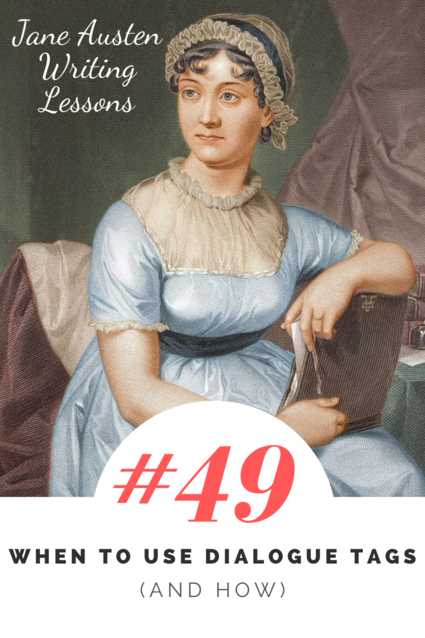
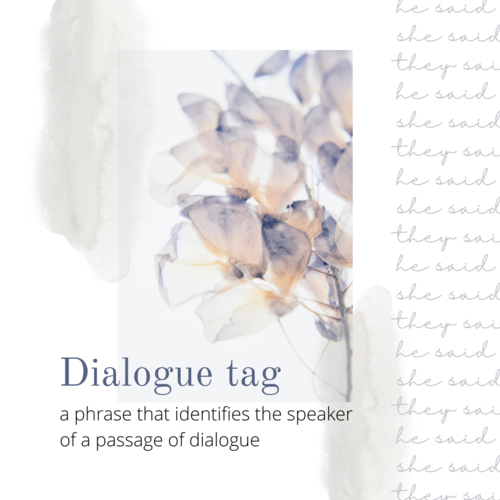
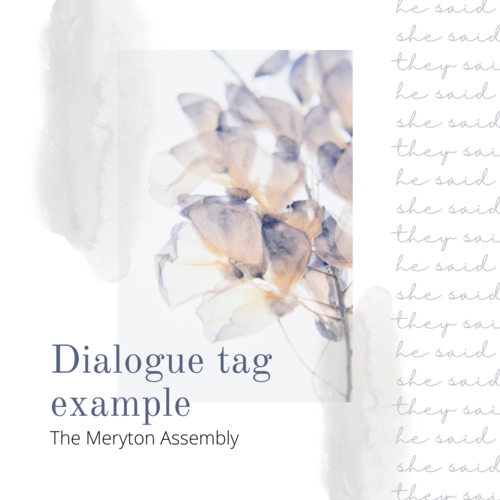
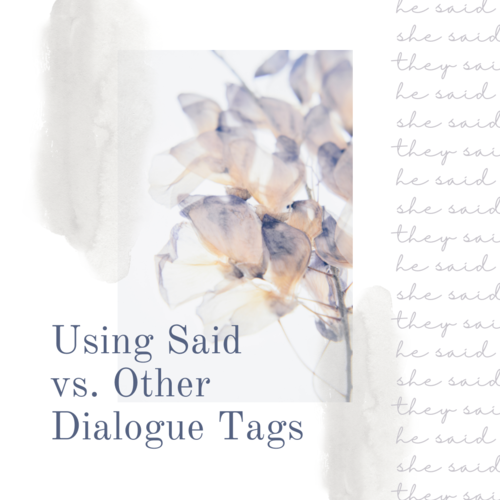
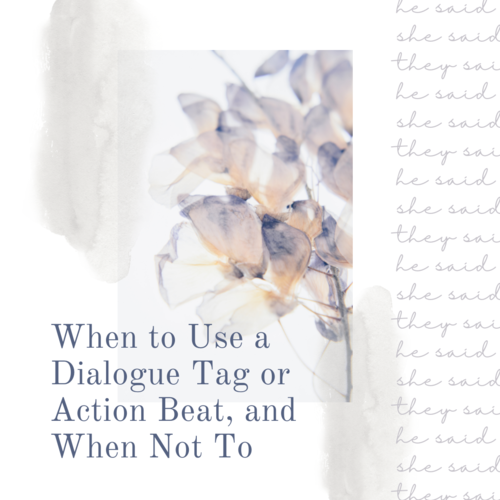

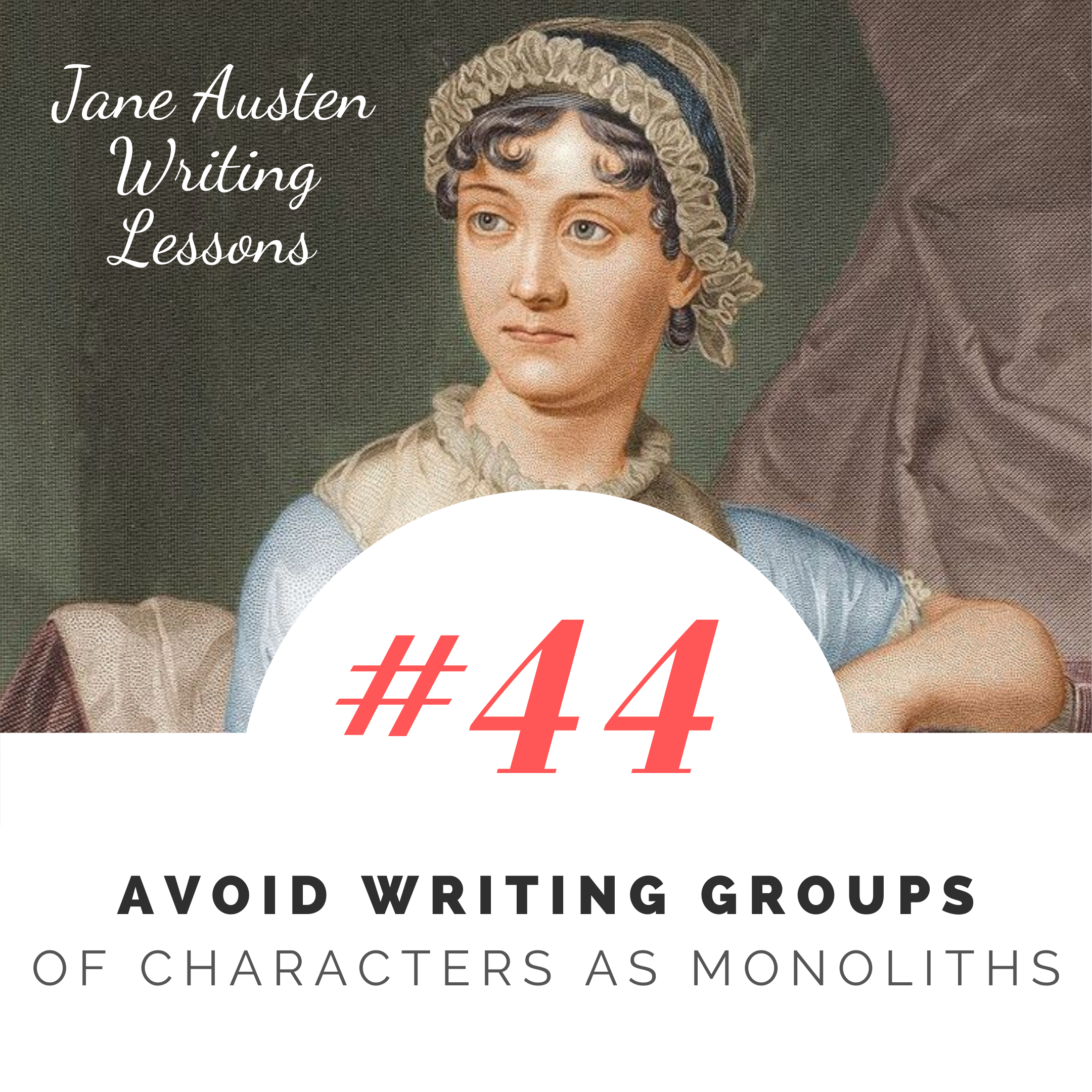
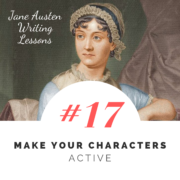
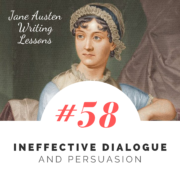
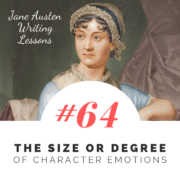
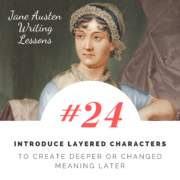
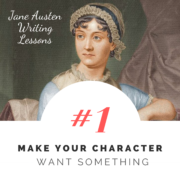


Leave a Reply
Want to join the discussion?Feel free to contribute!